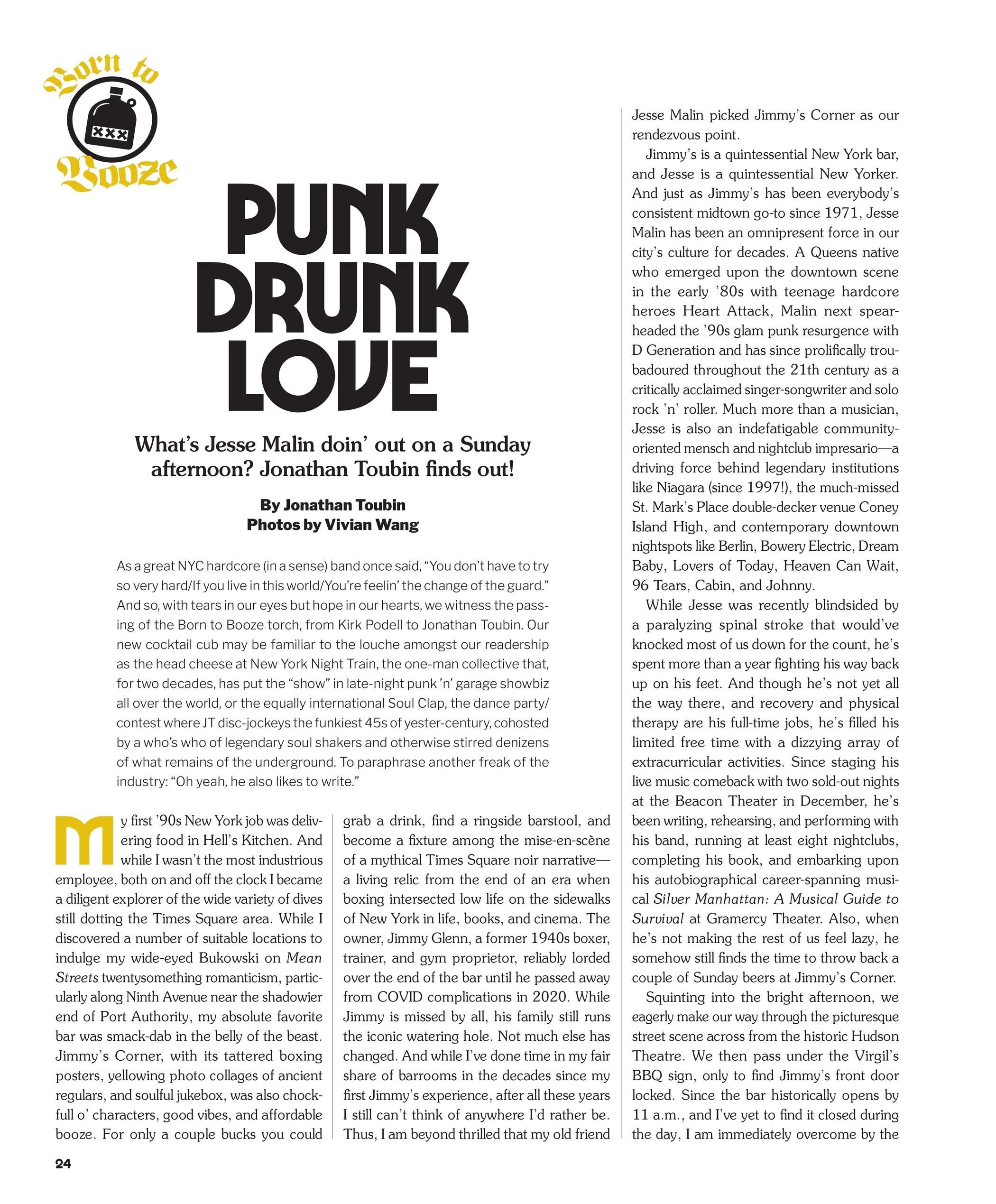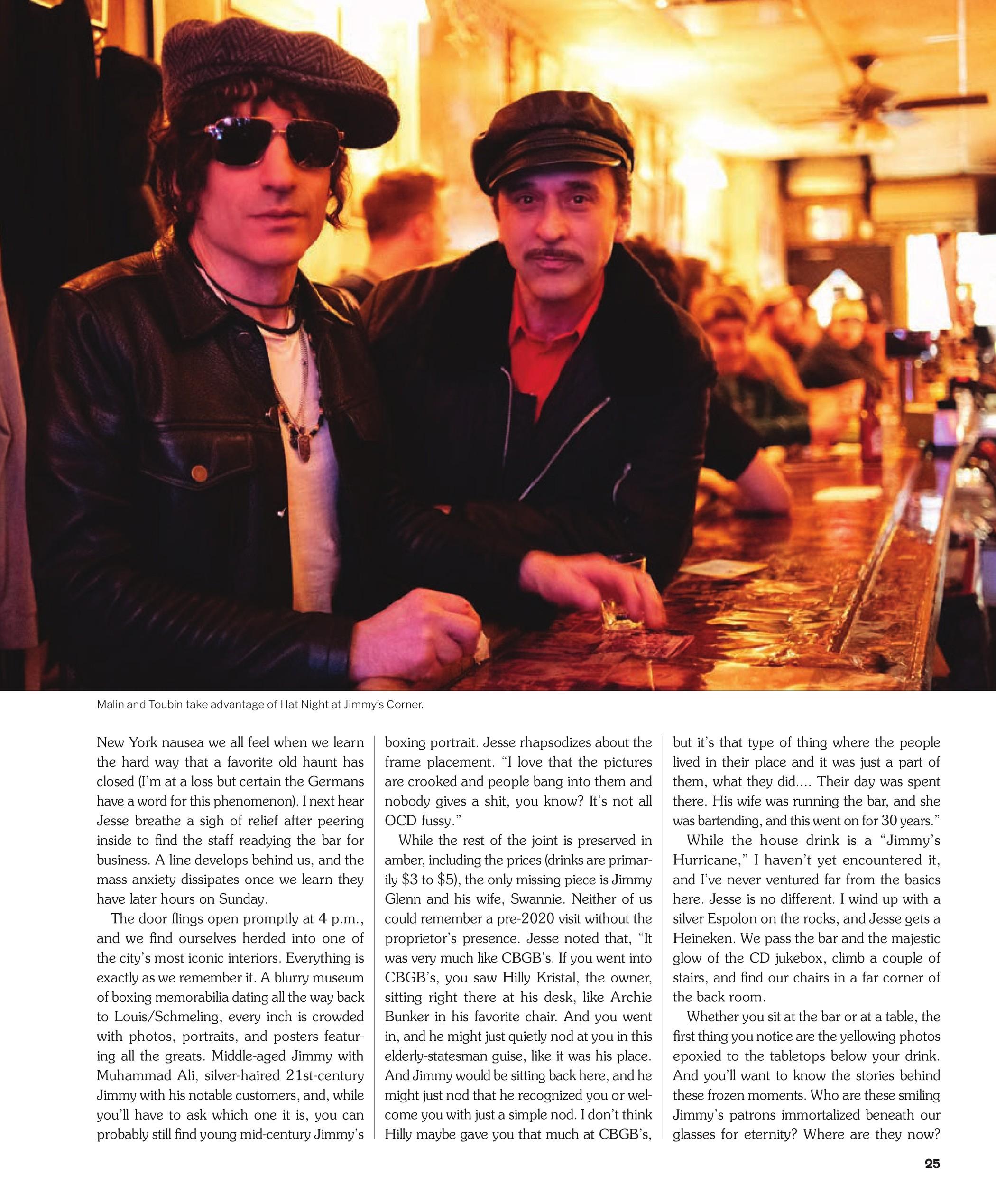Born to Booze
PUNK DRUNK LOVE
What’s Jesse Malin doin’ out on a Sunday afternoon? Jonathan Toubin finds out!


As a great NYC hardcore (in a sense) band once said, “You don’t have to try so very hard/lf you live in this world/You’re feelin’ the change of the guard." And so, with tears in our eyes but hope in our hearts, we witness the passing of the Born to Booze torch, from Kirk Podell to Jonathan Toubin. Our new cocktail cub may be familiar to the louche amongst our readership as the head cheese at New York Night Train, the one-man collective that, for two decades, has put the “show" in late-night punk ’n’ garage showbiz all over the world, or the equally international Soul Clap, the dance party/ contest where JT disc-jockeys the funkiest 45s of yester-century, cohosted by a who’s who of legendary soul shakers and otherwise stirred denizens of what remains of the underground. To paraphrase another freak of the industry: “Oh yeah, he also likes to write.”

